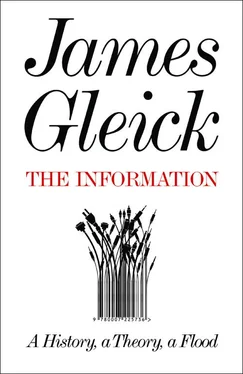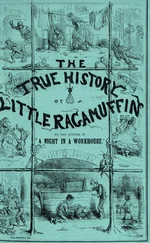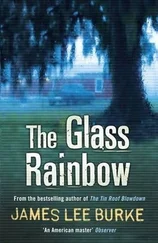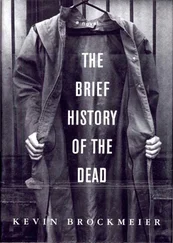THE
INFORMATION
A History
A Theory
A Flood
JAMES GLEICK

Dedication
FOR CYNTHIA
Epigraph
Anyway, those tickets, the old ones, they didn’t tell you where you were going, much less where you came from. He couldn’t remember seeing any dates on them, either, and there was certainly no mention of time. It was all different now, of course. All this information. Archie wondered why that was.
— Zadie Smith
What we call the past is built on bits.
— John Archibald Wheeler
Title Page THE INFORMATION A History A Theory A Flood JAMES GLEICK
Dedication
Epigraph
Prologue
Chapter 1 – Drums That Talk
Chapter 2 – The Persistence of the Word
Chapter 3 – Two Wordbooks
Chapter 4 – To Throw the Powers of Thought into Wheel-Work
Chapter 5 – A Nervous System for the Earth
Chapter 6 – New Wires, New Logic
Chapter 7 – Information Theory
Chapter 8 – The Informational Turn
Chapter 9 – Entropy and Its Demons
Chapter 10 – Life’s Own Code
Chapter 11 – Into the Meme Pool
Chapter 12 – The Sense of Randomness
Chapter 13 – Information Is Physical
Chapter 14 – After the Flood
Chapter 15 – New News Every Day
Epilogue
Acknowledgments
Notes
Bibliography
Index
Illustration Credits
Also by James Gleick
Copyright
About the Publisher Конец ознакомительного фрагмента. Текст предоставлен ООО «ЛитРес». Прочитайте эту книгу целиком, купив полную легальную версию на ЛитРес. Безопасно оплатить книгу можно банковской картой Visa, MasterCard, Maestro, со счета мобильного телефона, с платежного терминала, в салоне МТС или Связной, через PayPal, WebMoney, Яндекс.Деньги, QIWI Кошелек, бонусными картами или другим удобным Вам способом.
Prologue
The fundamental problem of communication is that of reproducing at one point either exactly or approximately a message selected at another point. Frequently the messages have meaning.
—Claude Shannon (1948)
AFTER 1948, which was the crucial year, people thought they could see the clear purpose that inspired Claude Shannon’s work, but that was hindsight. He saw it differently: My mind wanders around, and I conceive of different things day and night. Like a science-fiction writer, I’m thinking , “What if it were like this?”
As it happened, 1948 was when the Bell Telephone Laboratories announced the invention of a tiny electronic semiconductor, “an amazingly simple device” that could do anything a vacuum tube could do and more efficiently. It was a crystalline sliver, so small that a hundred would fit in the palm of a hand. In May, scientists formed a committee to come up with a name, and the committee passed out paper ballots to senior engineers in Murray Hill, New Jersey, listing some choices: semiconductor triode . . . iotatron . . . transistor (a hybrid of varistor and transconductance ). Transistor won out. “It may have far-reaching significance in electronics and electrical communication,” Bell Labs declared in a press release, and for once the reality surpassed the hype. The transistor sparked the revolution in electronics, setting the technology on its path of miniaturization and ubiquity, and soon won the Nobel Prize for its three chief inventors. For the laboratory it was the jewel in the crown. But it was only the second most significant development of that year. The transistor was only hardware.
An invention even more profound and more fundamental came in a monograph spread across seventy-nine pages of The Bell System Technical Journal in July and October. No one bothered with a press release. It carried a title both simple and grand—“A Mathematical Theory of Communication”—and the message was hard to summarize. But it was a fulcrum around which the world began to turn. Like the transistor, this development also involved a neologism: the word bit , chosen in this case not by committee but by the lone author, a thirty-two-year-old named Claude Shannon. The bit now joined the inch, the pound, the quart, and the minute as a determinate quantity—a fundamental unit of measure.
But measuring what? “A unit for measuring information,” Shannon wrote, as though there were such a thing, measurable and quantifiable, as information.
Shannon supposedly belonged to the Bell Labs mathematical research group, but he mostly kept to himself. When the group left the New York headquarters for shiny new space in the New Jersey suburbs, he stayed behind, haunting a cubbyhole in the old building, a twelve-story sandy brick hulk on West Street, its industrial back to the Hudson River, its front facing the edge of Greenwich Village. He disliked commuting, and he liked the downtown neighborhood, where he could hear jazz clarinetists in late-night clubs. He was flirting shyly with a young woman who worked in Bell Labs’ microwave research group in the two-story former Nabisco factory across the street. People considered him a smart young man. Fresh from MIT he had plunged into the laboratory’s war work, first developing an automatic fire-control director for antiaircraft guns, then focusing on the theoretical underpinnings of secret communication—cryptography—and working out a mathematical proof of the security of the so-called X System, the telephone hotline between Winston Churchill and President Roosevelt. So now his managers were willing to leave him alone, even though they did not understand exactly what he was working on.
AT&T at midcentury did not demand instant gratification from its research division. It allowed detours into mathematics or astrophysics with no apparent commercial purpose. Anyway so much of modern science bore directly or indirectly on the company’s mission, which was vast, monopolistic, and almost all-encompassing. Still, broad as it was, the telephone company’s core subject matter remained just out of focus. By 1948 more than 125 million conversations passed daily through the Bell System’s 138 million miles of cable and 31 million telephone sets. The Bureau of the Census reported these facts under the rubric of “Communications in the United States,” but they were crude measures of communication. The census also counted several thousand broadcasting stations for radio and a few dozen for television, along with newspapers, books, pamphlets, and the mail. The post office counted its letters and parcels, but what, exactly, did the Bell System carry, counted in what units? Not conversations , surely; nor words , nor certainly characters . Perhaps it was just electricity. The company’s engineers were electrical engineers. Everyone understood that electricity served as a surrogate for sound, the sound of the human voice, waves in the air entering the telephone mouthpiece and converted into electrical waveforms. This conversion was the essence of the telephone’s advance over the telegraph—the predecessor technology, already seeming so quaint. Telegraphy relied on a different sort of conversion: a code of dots and dashes, not based on sounds at all but on the written alphabet, which was, after all, a code in its turn. Indeed, considering the matter closely, one could see a chain of abstraction and conversion: the dots and dashes representing letters of the alphabet; the letters representing sounds, and in combination forming words; the words representing some ultimate substrate of meaning, perhaps best left to philosophers.
Читать дальше












